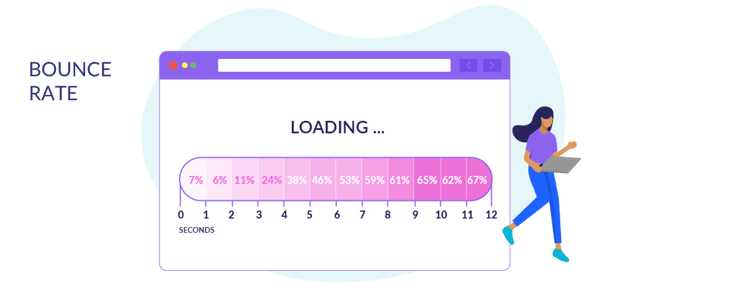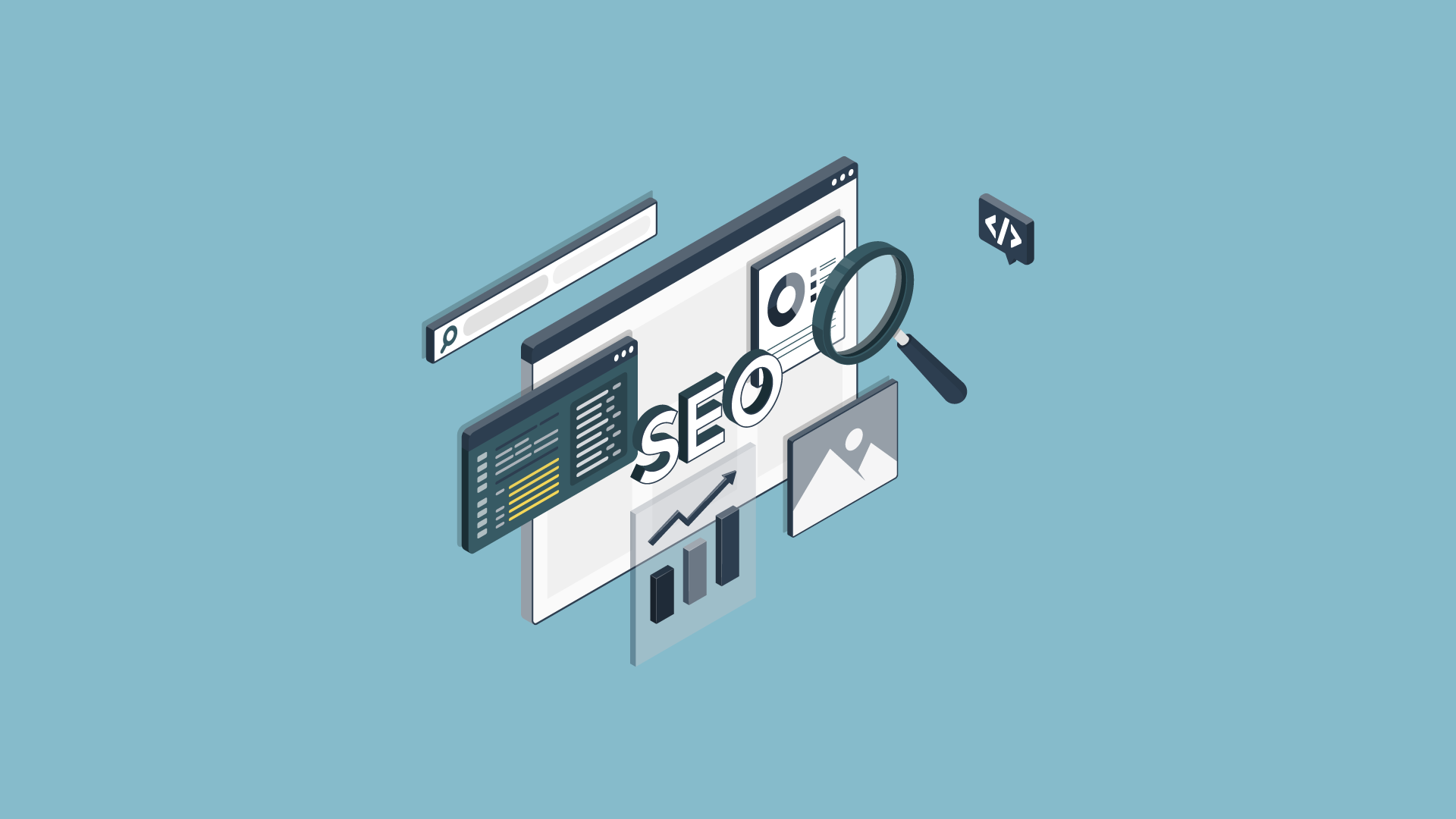Are you struggling to grow your business online? Maybe you’re not getting enough visitors to your site. Or maybe you just don’t know what kind of SEO strategy works best for your niche.
Search Engine Optimization (SEO) has become essential for every company that wants to succeed in its field. For example, SEO plays a crucial role in driving traffic from various sources, such as organic searches or social media platforms.
There are several ways to optimize your site for search engines. One way is through keyword research, another is through link building. There are several ways to optimize your site for search engines.
This article will give you examples of good practices for online growth.
| What is SEO? Search Engine Optimization (SEO) is a set of practices designed to improve the appearance and positioning of a website in organic search results. |
What is SEO?
SEO stands for search engine optimization. SEO is a set of practices designed to improve the appearance and positioning of a website in organic search results.
The most important thing about SEO is that it’s not just one strategy, but rather a combination of many strategies that work together to create an effective online marketing plan. This means that if you want to see your site grow organically, you need to use multiple tools and techniques to achieve this goal.
What is an SEO strategy?
A good SEO website plan involves planning, organizing, and optimizing your website so that it ranks well in search results. An effective SEO strategy will help you to deliver more relevant content, which means you’ll be able to attract more credible visitors and leads for your business.
SEO Strategy Examples for Online Growth
The internet is changing every day, and it’s important to keep up with what’s happening. If you want to grow your online presence, you need to know how to use SEO strategies effectively. Here are some examples of effective SEO strategy ideas that you can implement today:
1. Keyword optimization
Keyword optimization is the first step in any SEO. Keywords are one of the most important aspects of any SEO marketing strategy because keywords help determine where your site shows up in search result pages. To get relevant visitors to find your content, you need to optimize for the right keywords.
How do you figure out which keywords are relevant to your page? Start by doing some keyword analysis.
Long-tail keywords are usually better than short-tail keywords when it comes to ranking for searches. These are keywords that consist of three or more words. Long-tail keyword phrases are great for driving targeted traffic to your site. They're specific enough to be relevant but broad enough to attract lots of visitors.
After finding relevant keywords, you'll need to incorporate them into your website. You want to integrate your keywords into your content often, but don't overload them. Overloading leads to keyword stuffing. Overusing your keywords negatively affects your page's ranking, so you need to be careful not to overdo it.
2. Optimizing on-page elements
One of the most important aspects of SEO is making sure that your web pages are optimized for search engines. This includes ensuring that the title tag is descriptive enough to help people find your page and that it contains keywords that match up with what people type into the search bar. If you don't do this, you're missing out on potential traffic.
There are many different types of on-page elements that you can use to make your page more appealing to search engines. Some of the most common include:
- Page titles
- Meta descriptions
- Image alt text
- Content
- Links
3. Improving the backend of your site
Your back end, though invisible to visitors, is crucial to ensuring your audience has a positive online experience. Therefore, you must have a website that's functional and operates properly.
There are two ways to improve the back end of your website:
Speed up your site: To improve the performance of your website, start by speeding up its loading time. Research shows that 83% of users expect your website to load in three seconds or less. As a result, Google likes to show websites that are quick to respond.
If you don't optimize your website's speed, you'll lose out on the chance to rank higher in searches. To begin improving your website's loading times, use Google Page Speed Insights to get an idea of how long your page takes to display. Then follow up by using these tips to help you improve your website's performance.
Make sure your site is mobile friendly: More people are now accessing websites via their phones, so you must ensure that your site provides an optimal mobile user experience.
4. Creating user-friendly pages
The best way to rank high in search engines is by creating content that people want to read. This means making sure your site has clear navigation, easy-to-read copy, and relevant images. It also helps if your website is mobile-friendly.
User-friendly pages are important for several reasons. First, they make your site easier to navigate. Second, they encourage visitors to interact with your site. Third, they send a positive signal to search engine spiders, which makes your site easier to index.
One of the effective ways to make your site user-friendly is to keep navigation simple. You want to avoid having too many options, especially if you're trying to provide information about multiple products or services.
For example, if you sell shoes and clothing, you might offer separate sections for each category. But if you only sell shoes, you could combine both categories into one section.
5. Fast page speeds
A Backlinko analysis of 5 million desktop and mobile pages found that the average time it takes to fully load a webpage is 10.3 seconds on desktop, and 27.3 seconds on mobile.
Did you know that 83%of users expect pages to load within 3 seconds or less? And if your site doesn’t meet this expectation, you’ll have quite a few users bounce from your site — which tells Google that your site isn’t useful to them, causing Google to rank your site lower.

To improve your page speed, you can implement techniques such as compressing images, caching web pages, limiting redirects, and reducing JavaScript. You can also use tools like PageSpeed Insights to analyze your site and find ways to make it faster.
6. SEO-Friendly Content
It's no surprise that SEO and quality web copy go hand in hand. In general, the better the quality of your web copy, the higher you'll be ranked. It's not that easy.
However, it's a good idea to stick to these guidelines when writing articles for SEO purposes. Here are some tips on how to create SEO-friendly content.
Quality content for both products and services usually means writing articles that are well-researched and written enough so they're easy to understand. However, don't write them like blogs.
Your primary goal when creating your product page should be to turn visitors into leads and customers. Thus, you'll want to emphasize the unique selling points of your products rather than their prices.
Blogging is important because it allows you to share your expertise with other businesses and potential clients. When writing blog posts, focus on providing value to readers. Avoid using keywords excessively; instead, try to include them naturally throughout your post.
HubSpot found that businesses that publish content regularly get 350% more traffic than those that don't put as much effort into their content marketing.
Learn more on how to start a blog for your business.
7. Analyzing your competition
When you're gathering a list of SEO tactics, don't forget about competitor analysis. You'll find that knowing what your competitors are doing helps you understand where you stand.
To get better rankings in the search engine results pages (SERPs), it's important to understand who your competitors are and how you can outrank them. When you're trying to rank for a particular keyword, use Google to check out what comes up when people type in that word.
If you're looking at a competitor's page, ask yourself these questions:
- How do they structure their page?
- Does the page include multimedia?
- How long is their content?
- What does the page do well?
- What is the page missing?
- What could I do better?
You need to answer these key questions before you start writing any content.
You don't want your competitors' words exactly, but you can take inspiration from them by looking at their articles for ideas. For instance, if one of your competitors writes an interesting piece about the top 10 places in New York City, then maybe you could write something similar about the top 10 places on the East Coast.
8. Monitoring and optimizing
An example of an SEO strategy we use for our clients is to monitor their pages. If you spend the time and effort to optimize your SEO strategies, you don't want to see it wasted. You need to keep tracking your performance so you can optimize your efforts and adjust them if necessary.
Optimizing and monitoring are crucial aspects of any SEO strategy. They help you optimize your budget by adjusting your plans so they get the most out of your strategy. To be sure you're monitoring your SEO strategy correctly, you need to keep an eye on the following metrics:
- Website Traffic
- Bounce rate
- Pages per session
- Click-through rate (CTR)
- And more
If you include tracking as part of your SEO strategy, you can adjust your campaigns to improve their performance.
9. Meta Descriptions
Meta descriptions are one of the most important elements of SEO. They're used to describe your site's content to both visitors and search engines. You want to make sure that each piece of content on your site has a unique description, and that those descriptions include the keywords that best represent your site.
Meta descriptions are concise snippets of text that appear below the title tag in search engine results pages (SERPs). They play a vital role in driving organic traffic and improving user engagement.
Crafting compelling meta descriptions is an essential part of an effective SEO strategy. Here's what you need to know:
-
Length and Format: Keep meta descriptions concise, within 50 to 160 characters. Use relevant keywords to improve visibility.
-
Relevance and Clarity: Align meta descriptions with the webpage's content. Provide a clear summary that entices users to click.
-
Unique and Compelling: Create unique meta descriptions for each webpage. Highlight unique selling points and benefits to stand out.
-
Call-to-Action (CTA): Include a compelling CTA to increase the click-through rate. Phrases like "Learn more" or "Get started" create urgency.
-
Emphasize Value Proposition: Highlight the value users can expect from your webpage. Address pain points and offer solutions.
-
Testing and Optimization: Continuously test and optimize meta descriptions. Analyze performance metrics to refine and improve.
10. Optimizing for voice search
Voice search is becoming increasingly popular, especially among younger audiences. According to Statista by 2024, the number of digital voice assistants is expected to reach 8.4 billion units, meaning there would be more voice assistants in the world than humans.
If you don’t include voice search optimization as a part of your SEO strategy, you’re missing out on a huge opportunity to help your business grow.
Did you know that more than one billion voice searches happen each month? If you don't include voice search optimization as part of your SEO strategies, you're missing a valuable opportunity to help your business reach more users. Voice search optimization enables you to optimize your website for verbal searches.
When it comes to optimizing for voice search, you need to make sure that you optimize for the type of search being conducted. People search differently than they type. They ask questions, they speak slowly, and they often pause while speaking. All of these factors affect how they search.
You also need to consider the difference between voiced and unvoiced keywords. Voiced words are easier to understand and rank well. Unvoiced words, however, are harder to rank since they require additional effort to decipher.
Create your SEO strategy today
In conclusion, SEO strategy examples for online growth are essential for any website owner who wants their site to rank high in search engine results pages (SERPs). This includes sites like Google, Bing, Yahoo!, and Ask.com.
The key to ranking highly in these SERPs is to use keywords that are relevant to your content. These keywords should appear in your title tags, meta descriptions, page titles, and throughout your copy. They should also be used frequently within your content itself.
There are many options available for growing your brand online, and each option offers its own unique set of advantages. So which ones should you choose? That depends entirely on your budget, your target market, and your personal preferences. But whichever route you decide to take, keep in mind that the goal is to grow your brand online, not to build a huge empire overnight.
If you aren't sure which SEO marketing strategies are right for you, Fine Media can help. We're a full-service inbound marketing company that specializes in SEO.



